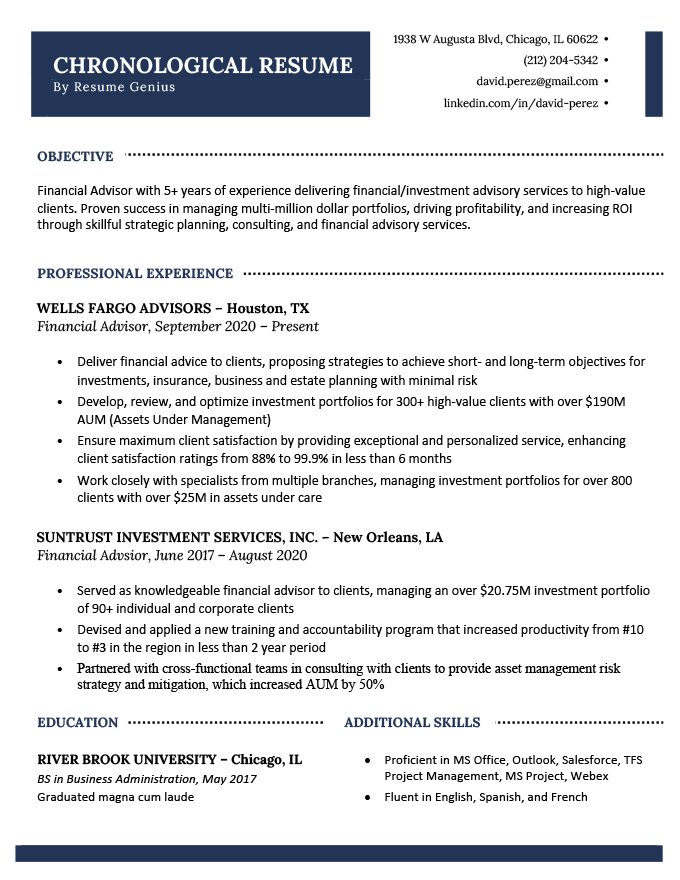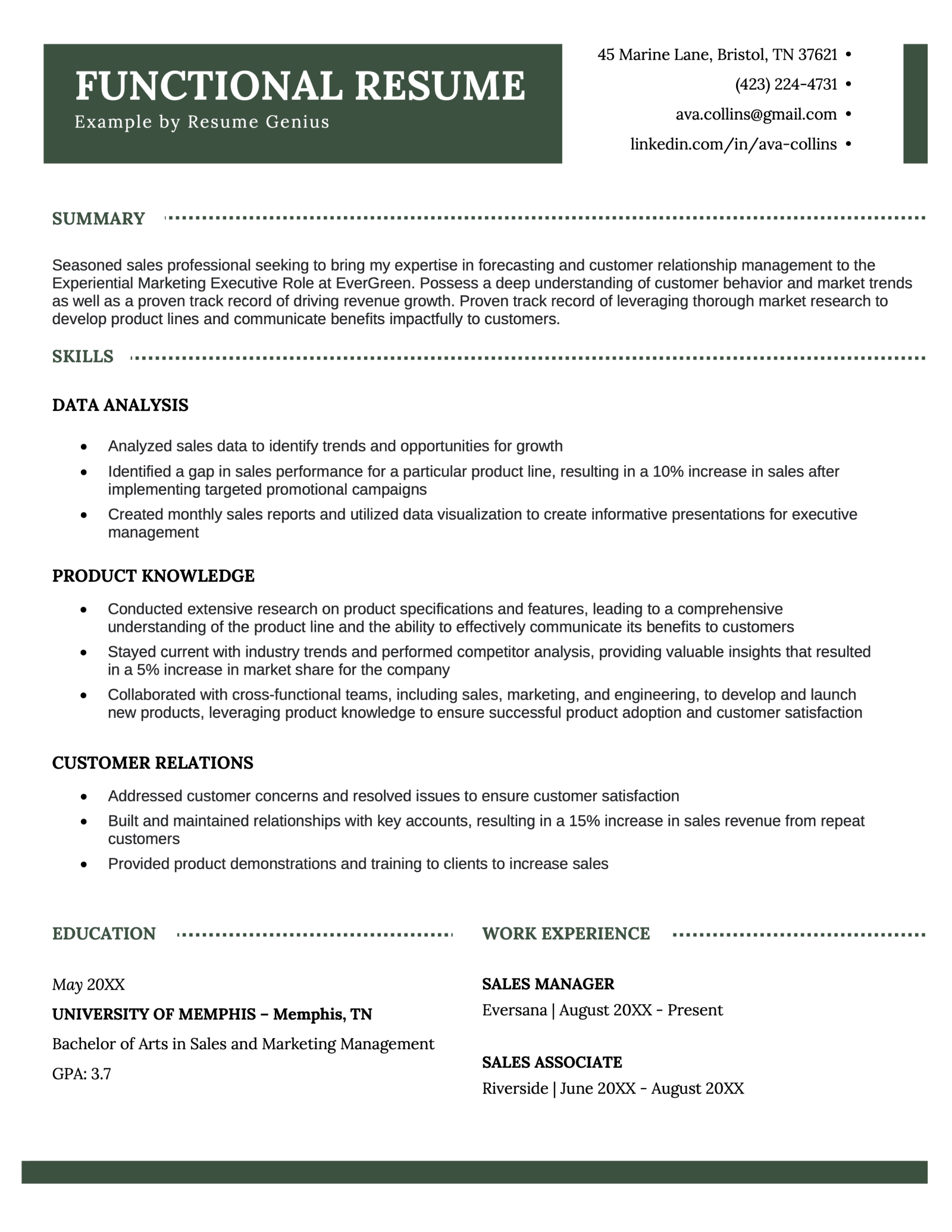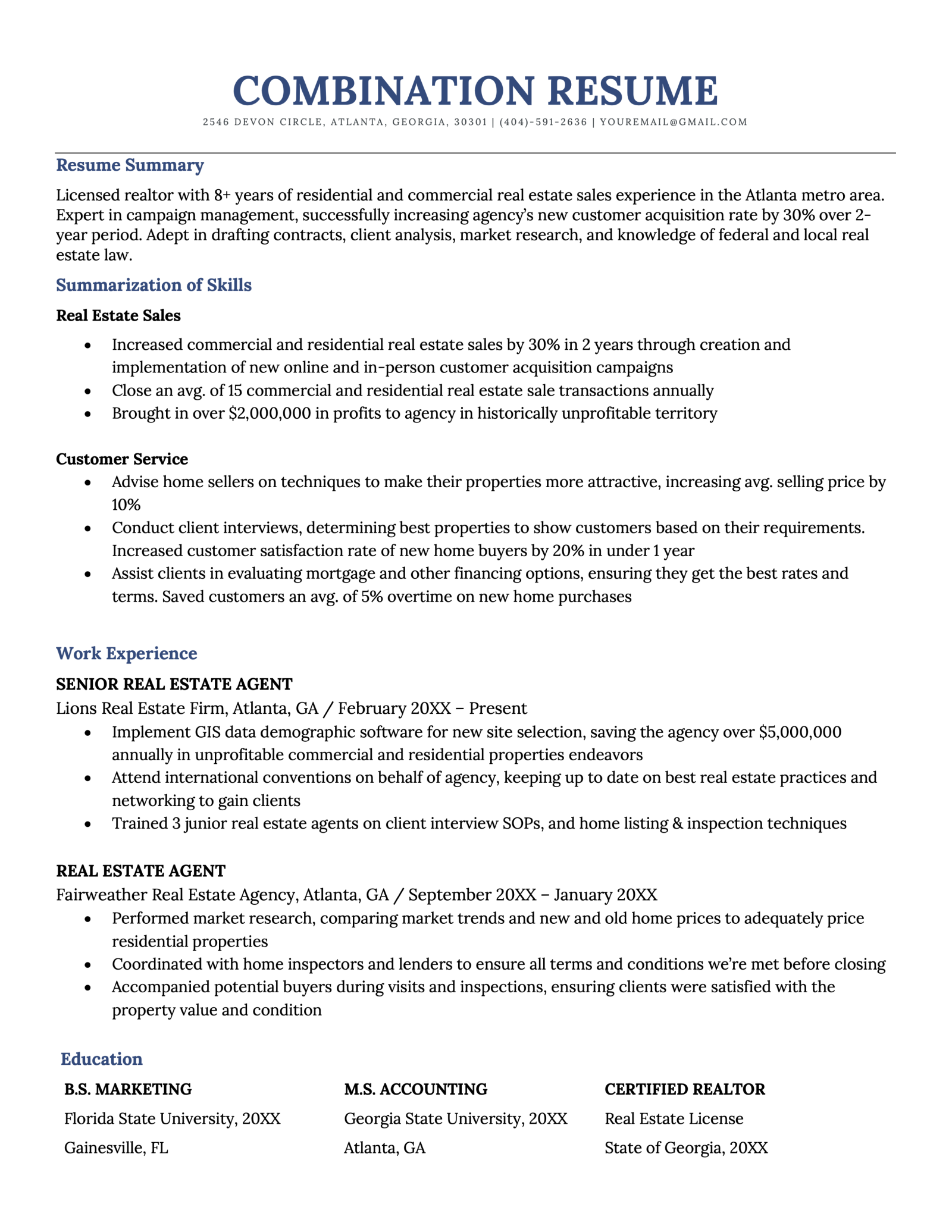
A resume can be seen as one of the documents employers may request you to submit as part of an application package. For instance, resumes give applicants the chance to define their experience and skills in their own words. Also, it’s helpful to review information about resumes and learn what to include in a resume to make yours as effective as possible. In this article, we discuss what a resume is, why it’s important, and to whom, as well as what to include and the essential types and parts of a resume with a template to help guide you in writing your own.
What Is a Resume?
A resume is a formal document that a job applicant creates to enumerate their qualifications for a position. Also, a resume usually goes with a customized cover letter in which the applicant expresses an interest in a specific job or company and draws attention to the most pertinent specifics on the resume.
American job instructors insist that a resume should be only one or two pages in length. British job applicants traditionally are expected to produce a somewhat more detailed document, called a CV (curriculum vitae)
What is the purpose of a resume?
The purpose of a resume is to show employers you’re fit for a position and convince them to offer you an interview.
Many job seekers wrongly assume their resume should provide a full overview of their professional history. Also, many hiring managers only spend a few seconds reviewing a resume before deciding whether they want to learn more about a candidate.

What is the importance of a resume?
Resumes are usually the first impression a potential employer has of you. Resumes are often the most vital step in the application process. However, here are some additional reasons why resumes are important:
. It provides an opportunity to market yourself to employers
. Also, it helps to outline your skills, background, and education so employers can easily see how your experience contributes to the success of a company.
Helps employers eliminate unqualified candidates.
. It allows you to demonstrate your written communication skills
Who needs a resume?
Many employers want applicants to submit a resume to be considered for a job opportunity. If you’re interested in applying to new jobs and you’d like to have a chance to interview in person, you likely need a resume to provide potential employers. Companies that want resumes typically mention that requirement in their job postings. Hence, if they don’t require a resume, they may have you fill out a paper application to get an idea of your career background. It’s still a good practice to provide a typed resume for jobs that don’t require them to show your expertise.
What You Should Not Put on a Resume
There is so much talk about what should be in your resume, but there are also some things that ought to be kept off the page. First, and most importantly, are your age, marital status, and the number of children you may have. While a potential employer might be able to deduce this information via a web search, it isn’t relevant for a job application.
In addition, do not list your current salary, religion, political beliefs, or any personal details (like your hobbies), unless that information is required for the job in question.
What Are Common Resume Mistakes?
Common resume mistakes include typos, vague details without a lack of specifics. Either being too long in detail or too short, grammatical errors, poor verb usage, adding insolent information, and not including enough information on skills.
Should I Create More Than One Resume?
This depends on whether you are applying for different types of jobs. For example, if you are applying for an office manager job, you should tailor your resume to outline your leadership and organizational skills. But you might also be interested in applying for a retail position, so creating a second resume that instead highlights any retail experience that you have will put you in a better position to get that job.
What If I Do Not Have Any Work Experience?
You can still create a strong resume even if you do not have any specialized work experience. However, your resume can include any volunteer work you have done and the responsibilities you had during this time. Also, if you are still in school, you can also list any academic organizations you are a part of and any offices and obligations you’re holding.
What to include on a resume for a job.
What you put on a resume depends on the job you’re applying for and your relevant professional background.
At a minimum, be sure to include these sections on your resume:
1. Contact details
When writing your contact information on your resume, include your first and last name, phone number, and email address. Additionally, you can add your LinkedIn profile.
List your city if you want to show you live near where the company is located.
2. Introduction
Add a concise overview of your professional background and key qualifications. Your introduction can be in the form of a resume summary or resume objective.
3. Education
Your resume’s education section can include your school name(s), highest degree earned, majors, and minors.
Additionally, you can add your GPA (if it’s greater than 3.8), Dean’s list (if you’ve been on it), or Latin honors (like cum laude). List relevant coursework only if you lack experience or if it’s related to the position.
4. Experience
List any relevant work experience you have. Include your title, the company you worked for, your start and end date, and bullet points outlining your key responsibilities and notable accomplishments.
5. Skills
Include skills on your resume that are relevant to the position. Also, be sure to use a strong mix of hard skills and soft skills to demonstrate that you’re a well-rounded candidate.
Types of resumes
Though chronologically organized resumes are most common, there’s a variety of resume formats, and each is used to emphasize different strengths.
Depending on your specific skill set or work history, one format might be better suited to highlight your qualifications than another.
There are four main types of resumes:
1. Chronological resume

A chronological resume opens with an introduction and then provides an overview of your professional history in reverse chronological order (meaning your most recently held position is listed at the top).
The chronological resume format is the most common type of resume used by job seekers today and is suitable for candidates with various experience levels.
Example of a chronological resume
The chronological format works best for most job seekers, including this financial advisor with five years of relevant work experience
2. Functional resume

A functional resume is formatted to focus on your skills and abilities rather than your career progression. It’s preferred by professionals who want to draw attention away from their traditional work experience, such as those who are changing careers or have significant gaps in their work history.
While similar to other resume formats, functional resumes are unique in several ways:
. The skills section takes up most of the page, and categorizes your professional accomplishments according to the skill is demonstrates
. The work experience section is short and barebones
Example of a functional resume
This candidate uses the functional resume format to draw attention to some of their greatest professional skills:
3. Combination resume

A combination resume is a format that combines aspects of a functional resume and a chronological resume.
While a chronological resume focuses heavily on experience and a functional resume emphasizes skills. Note, that a combination resume typically balances both work history and skills equally to demonstrate your qualifications.
Combination resumes are ideal for candidates who have extensive experience or a highly developed set of skills that they want to showcase.
Example of a combination resume
This developer uses a combination resume to strike a balance between featured skills and professional experience:
4. Targeted resume
A targeted resume is a resume you write with a specific position in mind.
Use this format to highlight the skills and experience you have related to the position — writing each part of your resume in a way that best emphasizes your necessary qualifications.
To write a strong targeted resume, scan through the job listing for the position you want to fill. Typically, hiring managers include the skills, responsibilities, and traits that they want candidates to possess directly in the job description.
Showcase these qualities on your resume to demonstrate you’re an ideal fit (if you have the qualities they mention).
Frequently asked questions about resumes
Here are some questions job seekers often have about resumes:
Are resumes outdated?
No, resumes aren’t outdated. Hiring managers prefer traditional resumes over modern versions like video resumes and online networking profiles because:
. A resume’s outline format makes it easier to read
. Resumes are one page long and can be quickly scanned without scrolling or fast-forwarding
. The hiring manager can read your resume without logging onto a website or opening a video player
. Resumes are easy to print for reference during an interview
Even if you’re recruited based on an online profile or portfolio, the recruiter will likely ask for a copy of your resume to share with the employer.
If you’re worried that your resume looks outdated, use a modern resume template with updated formatting.
What is a good resume?
A good resume is a resume that successfully captures and maintains busy hiring managers’ attention. It follows one of the three standard resume formats (chronological, functional, combination). Secondly, it showcases the candidate’s top relevant skills and career highlights.
A good resume is also well-formatted and uses a template that is appropriate for your industry.
What is a resume for a job?
A resume for a job is a resume written by a candidate applying for a new professional role, whether that is within the same company or at a different company. A resume for a job should be tailored for a specific position at a specific organization.
Other types of resumes include internship resumes, general resumes, and LinkedIn resumes.
What is a college resume?
A college resume is used by current students or recent graduates to apply for a job or internship position. Hence, it typically places greater emphasis on your education and non-work related experience than a traditional resume which focuses on your professional achievements.
